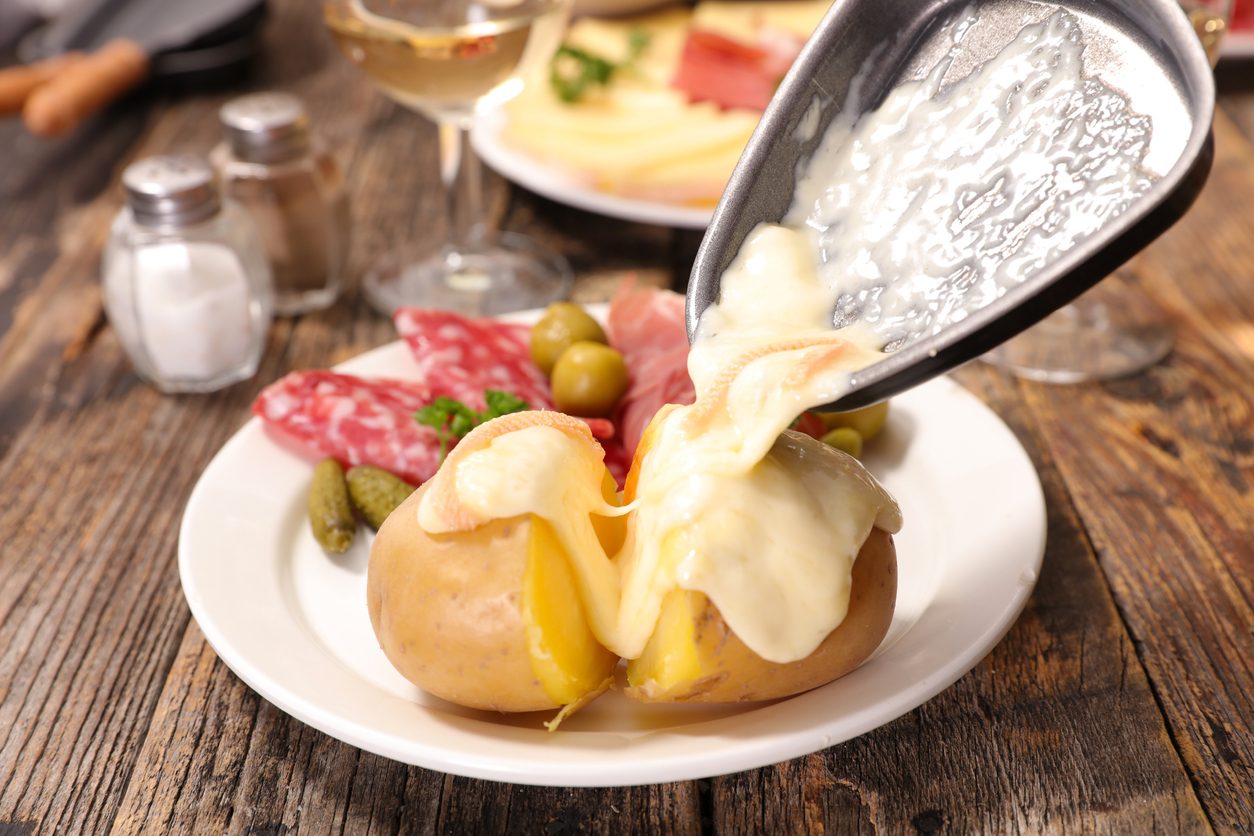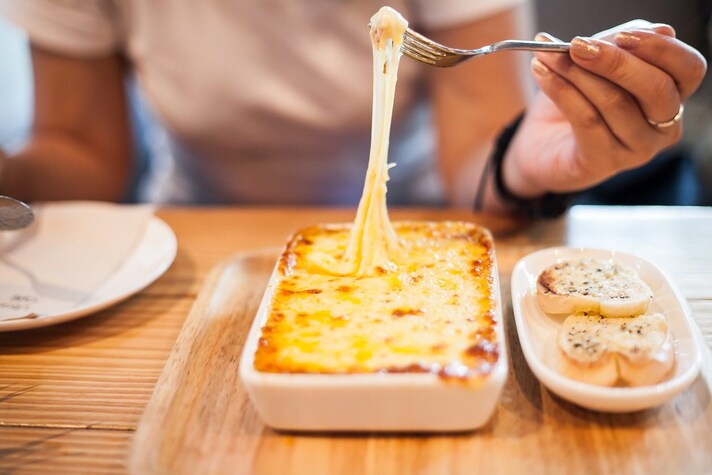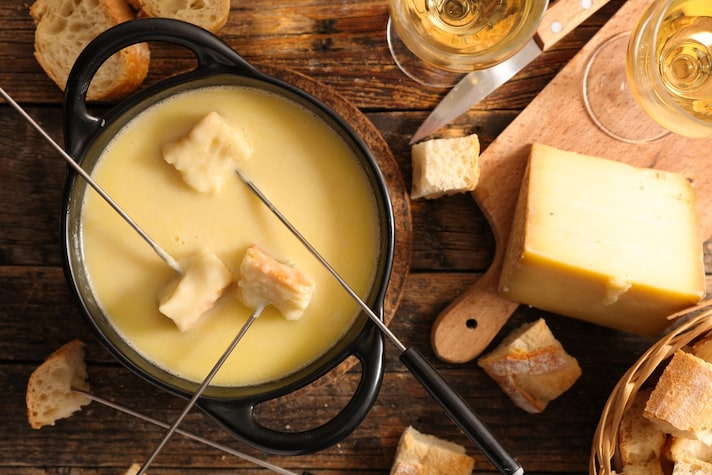Why Does Cheese Melt? Exploring the Science Behind Cheese Melting
There's something undeniably satisfying about a perfectly melted cheese, whether it's oozing over nachos, enveloping a slice of pizza, or adding richness to a creamy sauce. But have you ever wondered why some cheeses melt beautifully while others turn grainy or oily? Read ahead for the fascinating science behind cheese melting and uncover the secrets to achieving that wholesome cheese pull.
;)
Melted cheese is an all-round enjoyable experience. Ahead, we explore the intriguing science behind cheese melting, explaining the molecular processes that govern the transformation. As you’ll find, the process is brought about by an interplay of protein denaturation, fat melting, moisture content, cheese age, and acidity, ultimately determining the meltability of different cheeses.
Explaining the Science Behind Melting Cheese

When cheese is heated, its solid structure undergoes a phase change, transitioning from a solid state to a more fluid, melted state. This transformation is primarily driven by the breakdown of the protein molecules in cheese, particularly casein, which is the main milk protein present in cheese. Other components such as water, fat, and salt also play crucial roles in the melting process.
1. Protein Denaturation
At the molecular level, heating cheese causes the protein molecules, primarily casein, to denature. Denaturation involves the disruption of the protein's native structure, leading to the unfolding of its three-dimensional shape. As a result, the protein molecules become more flexible and able to move more freely within the cheese matrix, contributing to its fluidity.
2. Fat Melting
Cheese contains varying amounts of fat, which also undergoes changes when heated. The fat molecules within the cheese begin to soften and melt at around 90°F (32°C). As the temperature increases further, typically by 40-60 degrees, the fat becomes more fluid, aiding in the overall melting process. The melted fat helps lubricate the protein network, preventing it from becoming too rigid and maintaining a smooth, creamy texture.

3. Water Content
The moisture content of cheese influences its melting properties. Cheeses with higher moisture content tend to melt more easily, as the water present facilitates the movement of protein and fat molecules during heating. Conversely, aged cheeses with lower moisture content may resist melting and instead become dry or grainy when heated.
4. Age and Texture
The age of the cheese also impacts its melting behavior. Younger cheeses, such as fresh mozzarella or mild cheddar, contain higher levels of moisture and have more elastic protein structures, making them more prone to melting. In contrast, aged cheeses, like Parmesan or aged cheddar, have lower moisture levels and firmer protein networks, resulting in less pronounced melting characteristics.
5. Acidity
The acidity of cheese can affect its melting properties as well. Cheeses that are curdled using acid rather than rennet, such as paneer or ricotta, may not melt well due to their high acid content. The acid interferes with the protein structure, preventing it from becoming fluid during heating.
Why Do Some Cheeses Melt Better Than Others?

If you are a cheese lover then you have most likely noticed a difference between how different types melt. Below, we explore why certain cheeses melt better than others:
- Brie: High-moisture, bloomy rinded cheeses like Brie and Camembert are excellent melting cheeses, thanks to their soft texture and high moisture content.
- Raclette: With its nutty flavor and high moisture and fat content, raclette is perfect for melting. It's traditionally enjoyed melted over potatoes in Swiss raclette dishes.
- Leicester: Red Leicester cheese boasts a higher fat content than cheddar, making it a superior melter with a smooth, silky texture.
- American Cheese: Despite its reputation, American cheese is prized for its excellent melting properties, making it ideal for creamy cheese sauces and oozy grilled cheese sandwiches.
- Mozzarella: While mozzarella may not melt like other cheeses, its elastic texture makes it perfect for achieving the ultimate cheese pull in dishes like pizza and fried mozzarella sticks.
- Soft Goat Cheese: Young goat cheese with high moisture content melts easily, creating a smooth, creamy sauce when stirred into hot pasta.
- Gorgonzola: Creamy gorgonzola dolce, with its high fat and water content, melts effortlessly, making it ideal for rich sauces and drizzling over savory dishes.
How to Choose the Best Cheese for Melting

Cheese melting is not just a simple matter of applying heat; several factors come into play to determine whether a cheese will melt smoothly or not. Here are the key elements that influence the melting properties of cheese which you can use to determine the best buy on your next shopping trip:
- Moisture: Higher moisture levels make cheese melt more easily. Cheeses like Brie, with more moisture, melt effortlessly compared to drier ones like Parmesan.
- Fat: More fat leads to smoother melting. Cheddar, with its higher fat content, melts better than lower-fat Swiss cheese.
- Age: Younger cheeses melt easier than aged ones. Parmesan, aged and dry, can turn grainy or oily when heated.
- Manufacturing: Cheese-making methods affect melting. Stretched cheeses like mozzarella become stretchy or oily when melted.
- Acidity: Cheeses curdled with acid may not melt well. Paneer, feta, and ricotta, with high acidity, retain their shape when heated.
Pro tip: Some helpful tips that can help you optimize your cheese melting are to add a touch of acidity, like white wine, to enhance melting, a technique commonly utilized in Swiss cheese fondue. Also, steer clear of pre-grated cheese as they contin additives that compromise the quality of the cheese.
Conclusion

From moisture and fat content to aging and manufacturing process, several factors influence a cheese's melting properties. If you understand the science behind cheese melting and the importance of employing the right techniques, you can achieve perfectly melted cheese every time.
;Resize,width=767;)
;Resize,width=712;)


